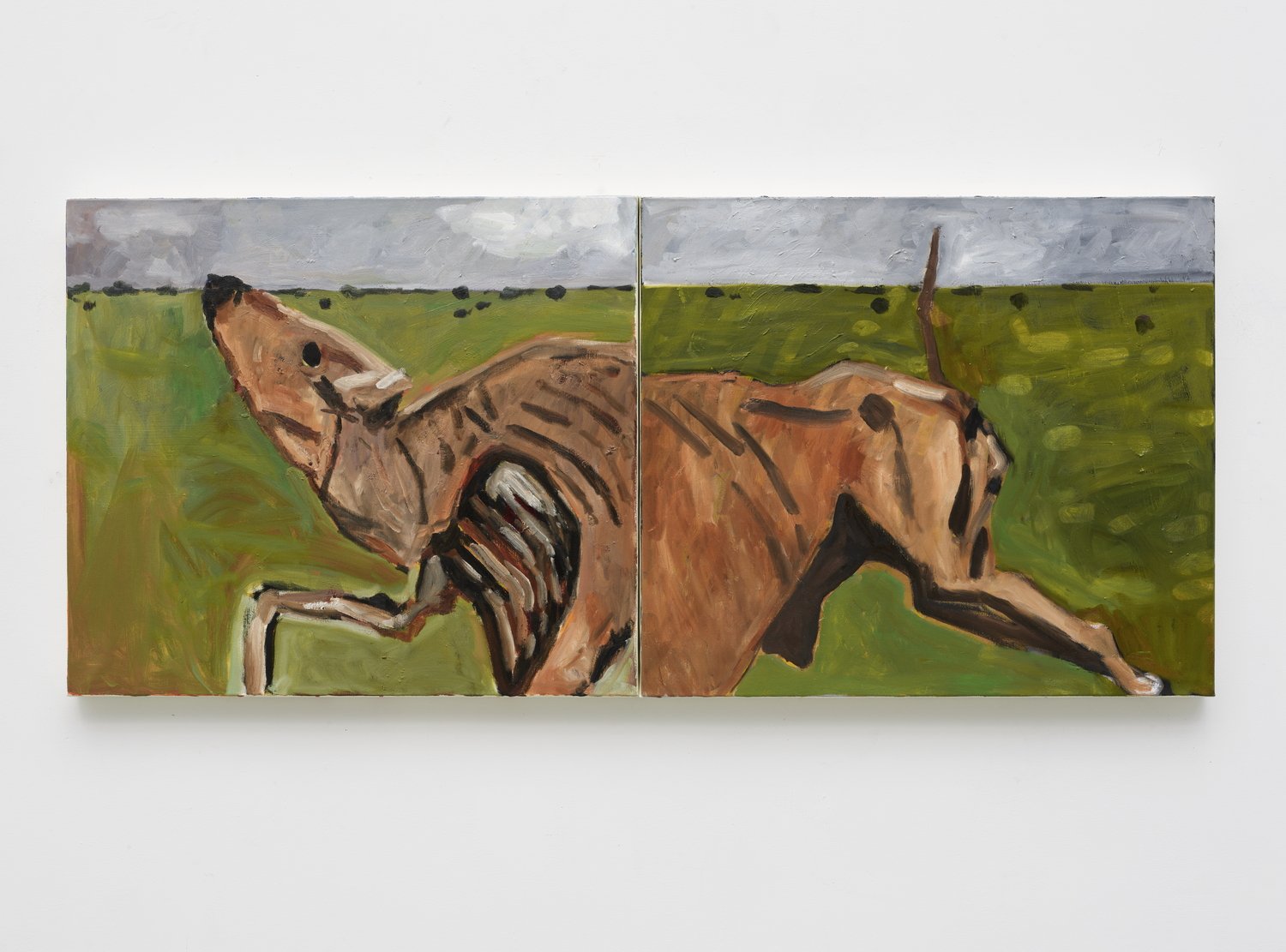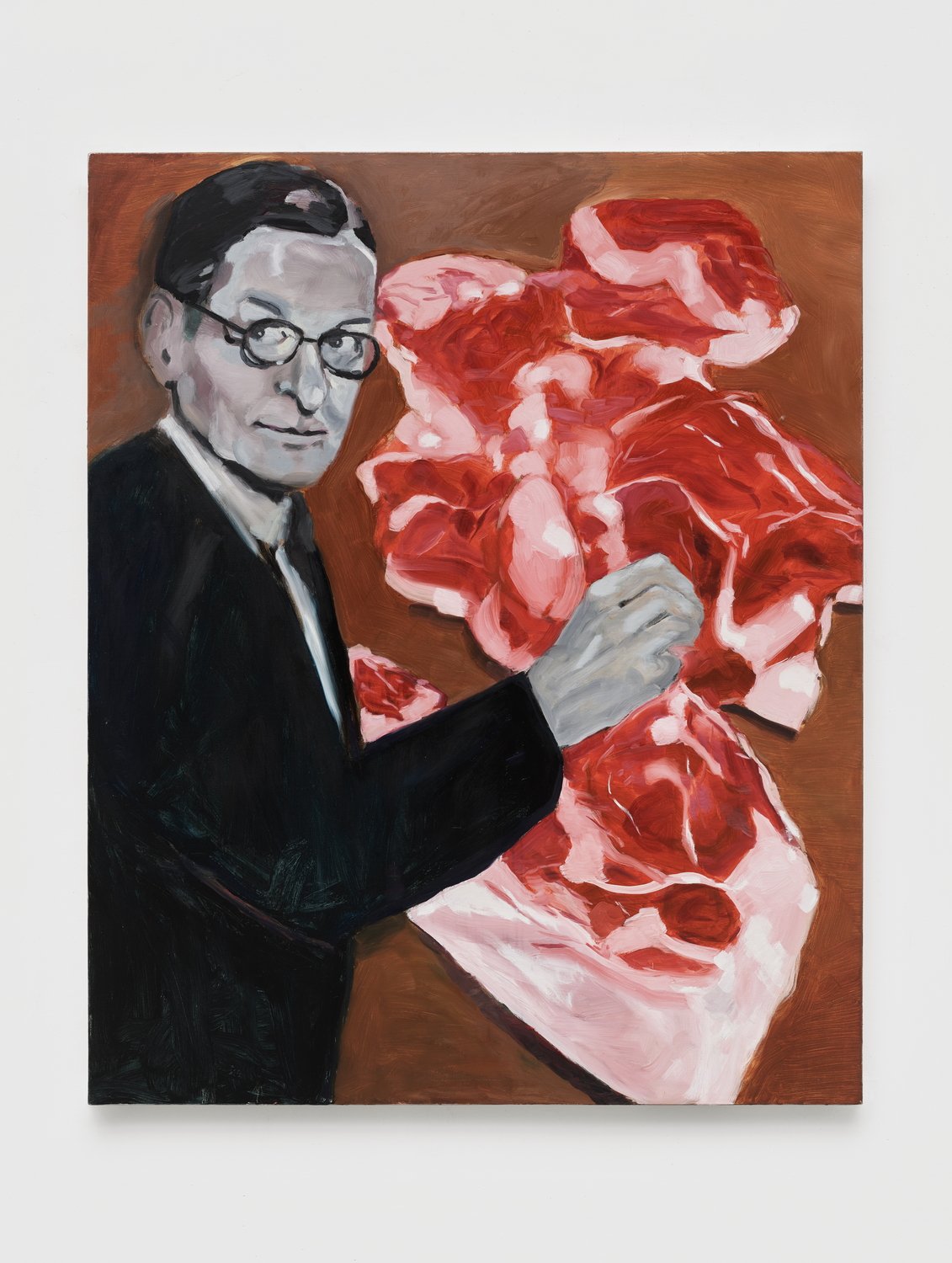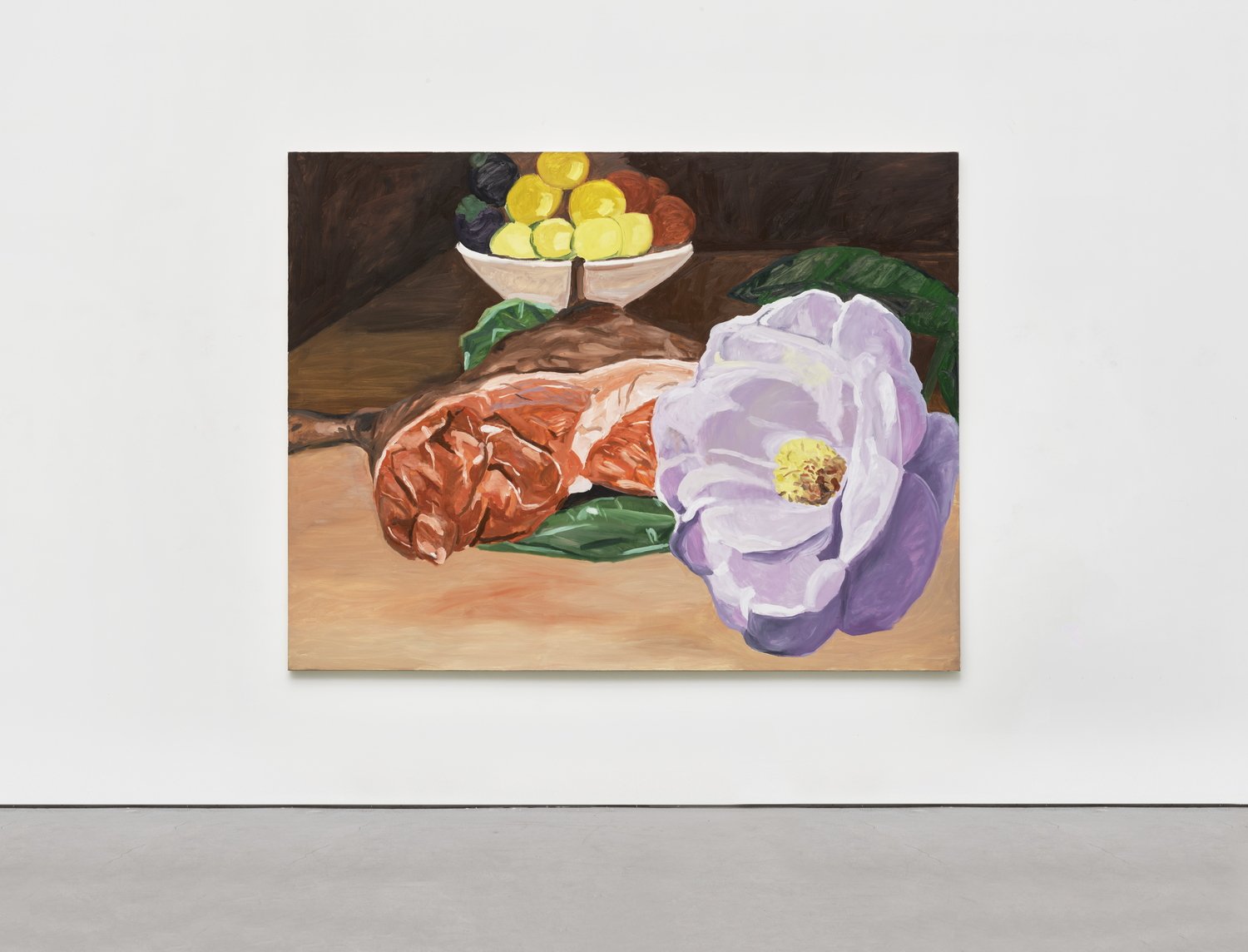Zhao Gang : Carnivore
Zhao Gang赵刚 Diamond Beach 2 钻石海岸2 2023 Oil on canvas 布面油画 2 parts. Overall/双联;整体: 70 x 160 x 4.5 cm, 27 1/2 x 63 x 1 3/4 in © Zhao Gang. Courtesy Lisson Gallery
For his first solo exhibition with Lisson Gallery, Zhao Gang presents ‘Carnivore’ , featuring a series of new paintings that represent the artist's exploration of the interweaving psychology, emotions, and lifestyles across history and the present. These works delve into the distorted and obscured perceptions and experiences resulting from such interactions, probing the fluidity of individual identity amidst cultural conflicts and historical ruptures.
One of the highlights of the exhibition is T. S. Eliot (2024), through which Zhao investigates the American- English poet for first time in his practice. Zhao came across a biography of Eliot from a used bookstore in London, and read it on his flight to New York. The tense relationship between Eliot and his first wife, Vivienne Haigh-Wood, resulted in an extremely difficult marriage, bedeviled by nervous and physical illness on both sides. Eliot’s “elite, super-controlled, white male personality” and the way it tribulated his personal life sparked the
artist's philosophical contemplation on love and intimacy between individuals. In the suite of paintings presented in Beijing, Zhao uses raw pork and lamb legs as primary motifs that symbolically allude to the human form, thereby challenging the audience's preconceived notions through techniques of deconstructivism reminiscent of the 1980s. Adjacent to slabs of meat, portraits of Eliot and Haigh-Wood are rendered deathly pale, mirroring their dissonant union.
Zhao Gang 赵刚 T. S. Eliot T.S. 艾略特 2024 Oil on canvas 布面油画 160 x 130 cm 63 x 51 1/8 in © Zhao Gang. Courtesy Lisson Gallery
Still life remains a recurring motif in Zhao Gang's practice. Sequels to his thematic exploration of still life florals and mounds of meat during the pandemic, select works in this exhibition feature various kinds of meat, vegetables, wine glasses, and flowers arranged in domestic settings.
Zhao Gang 赵刚 Camellia 山茶花 2023 Oil on canvas 布面油画 200 x 260 cm 78 3/4 x 102 3/8 in © Zhao Gang. Courtesy Lisson Gallery
These juxtapositions manifest Zhao’s displaced sensibilities amidst his tumultuous emotional landscape. Having recently relocated to a new studio after years of living abroad, Zhao Gang finds solace in solitary contemplation and reveries in between his creative pursuits; with each relocation, he grows increasingly mindful and appreciative of his surroundings. With a disruptive impulse, as seen in Camellia (2023), the artist manipulates the scale and perspective of the cut of meat and flowers within the pictorial plane, elevating the viewers from reality through a super-magnified lens, prompting introspection on one’s own existential fate within this phenomenological experience.
Representation of food also appears in a series of small paintings rendered in circular, oval, and lozenge forms. These compositions feature raw meat-cuts, cooked and uncooked fish, as well as partially consumed fruits and vegetables. In traditional Chinese culture, the image of bountiful food symbolises aspirations for a prosperous life, where chicken, duck, fish, and pork are the four main dishes prevalent among banquets and feasts. These works reflect the artist's enduring yearning for a stabile and reclusive life, after years spent drifting overseas.
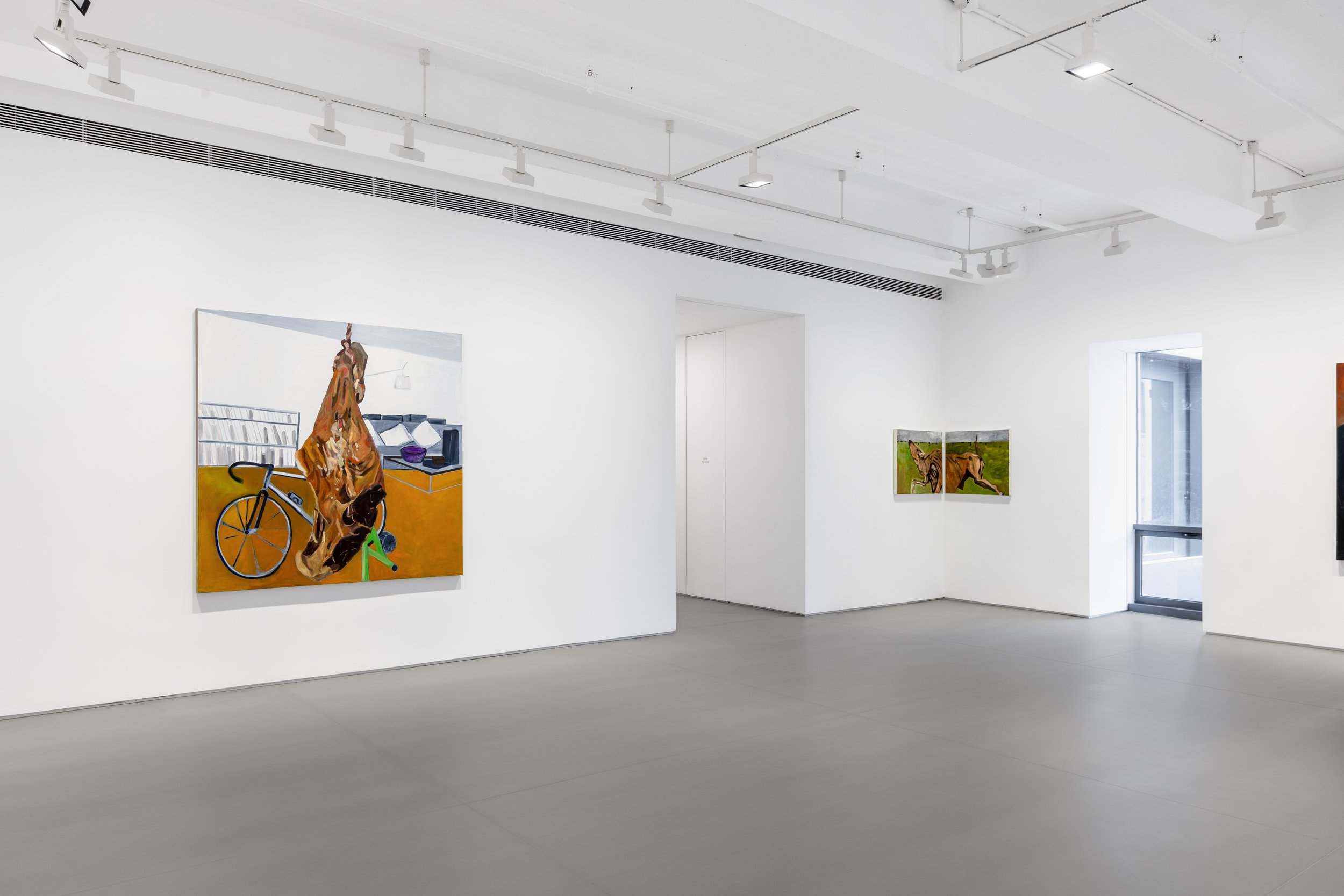
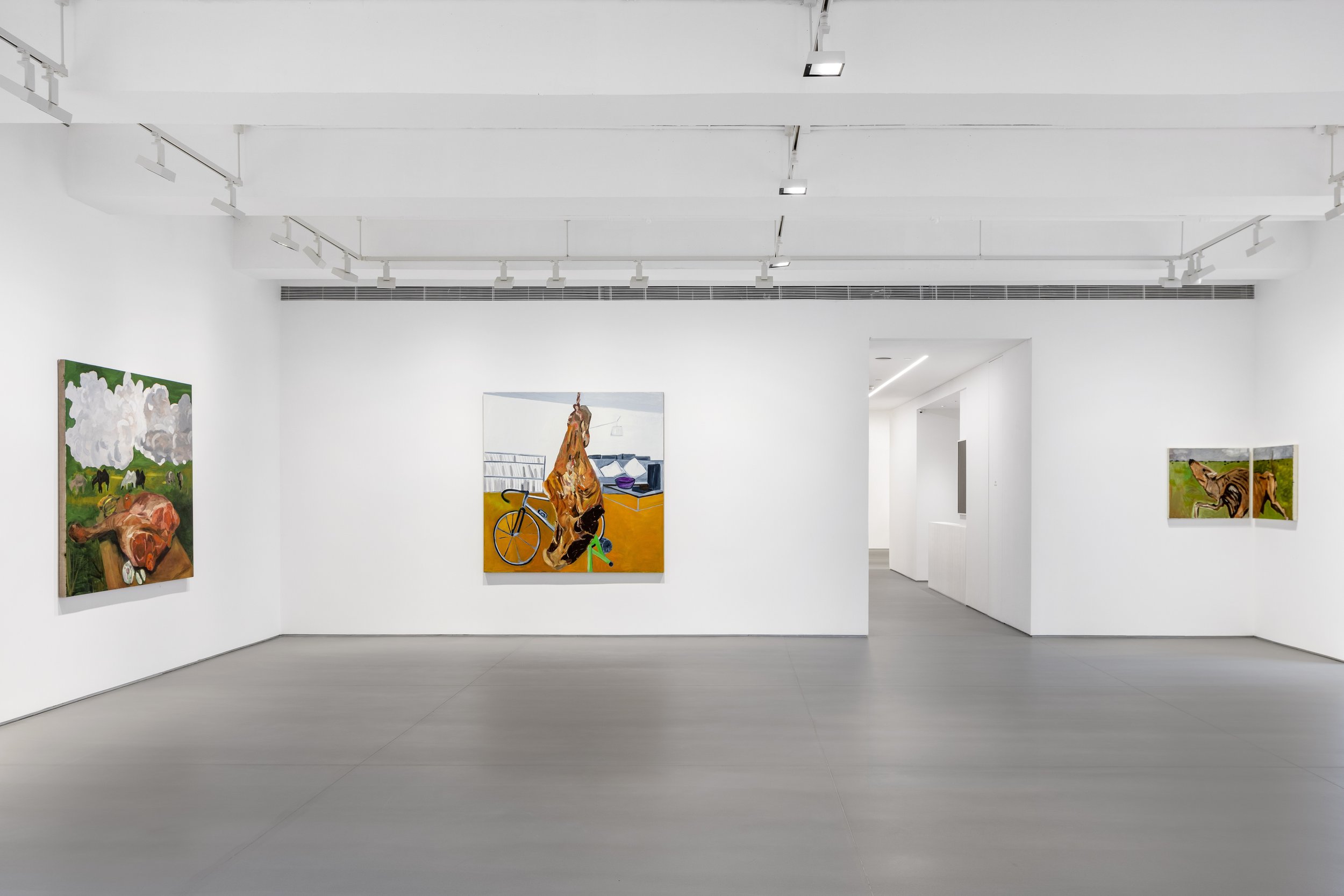
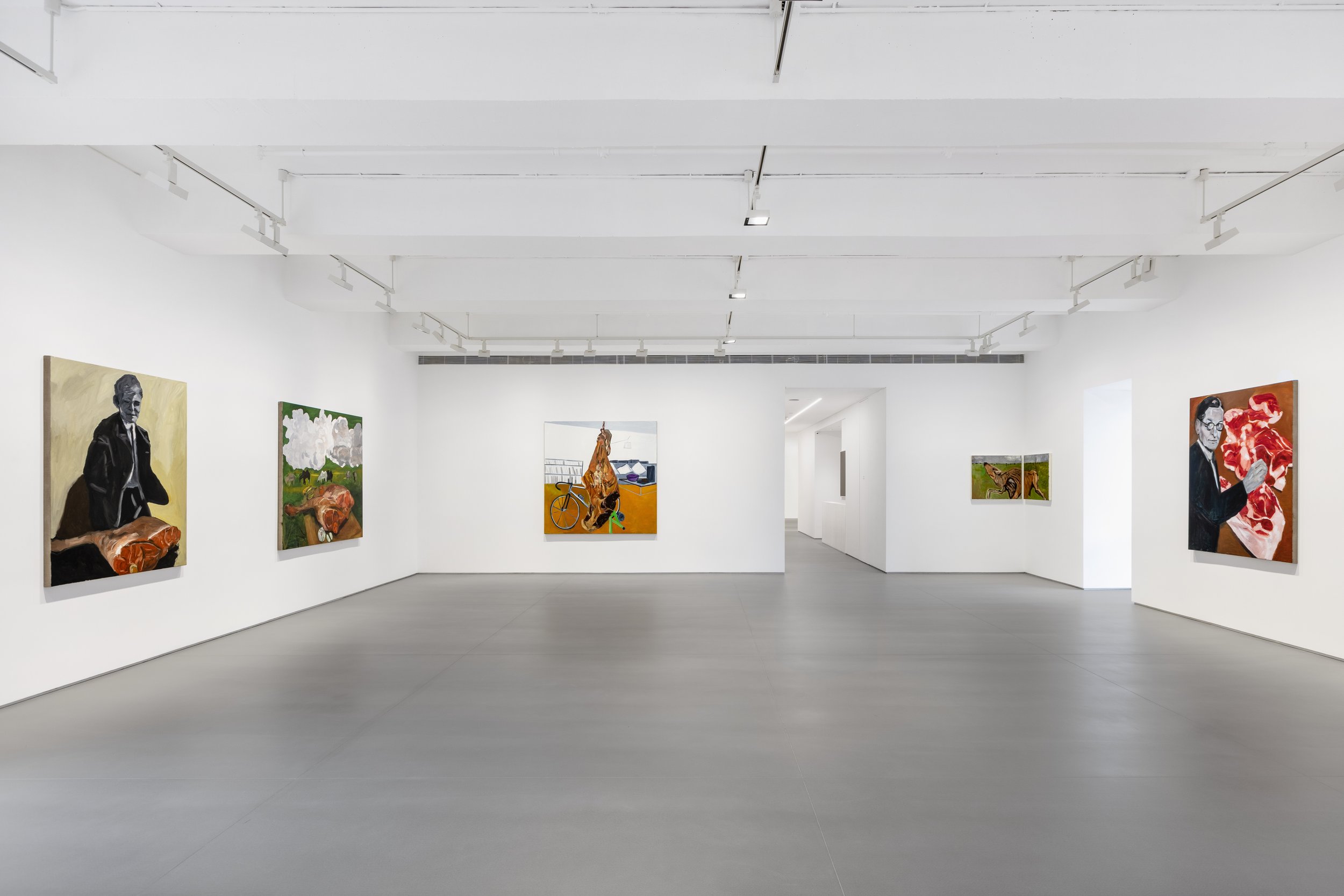

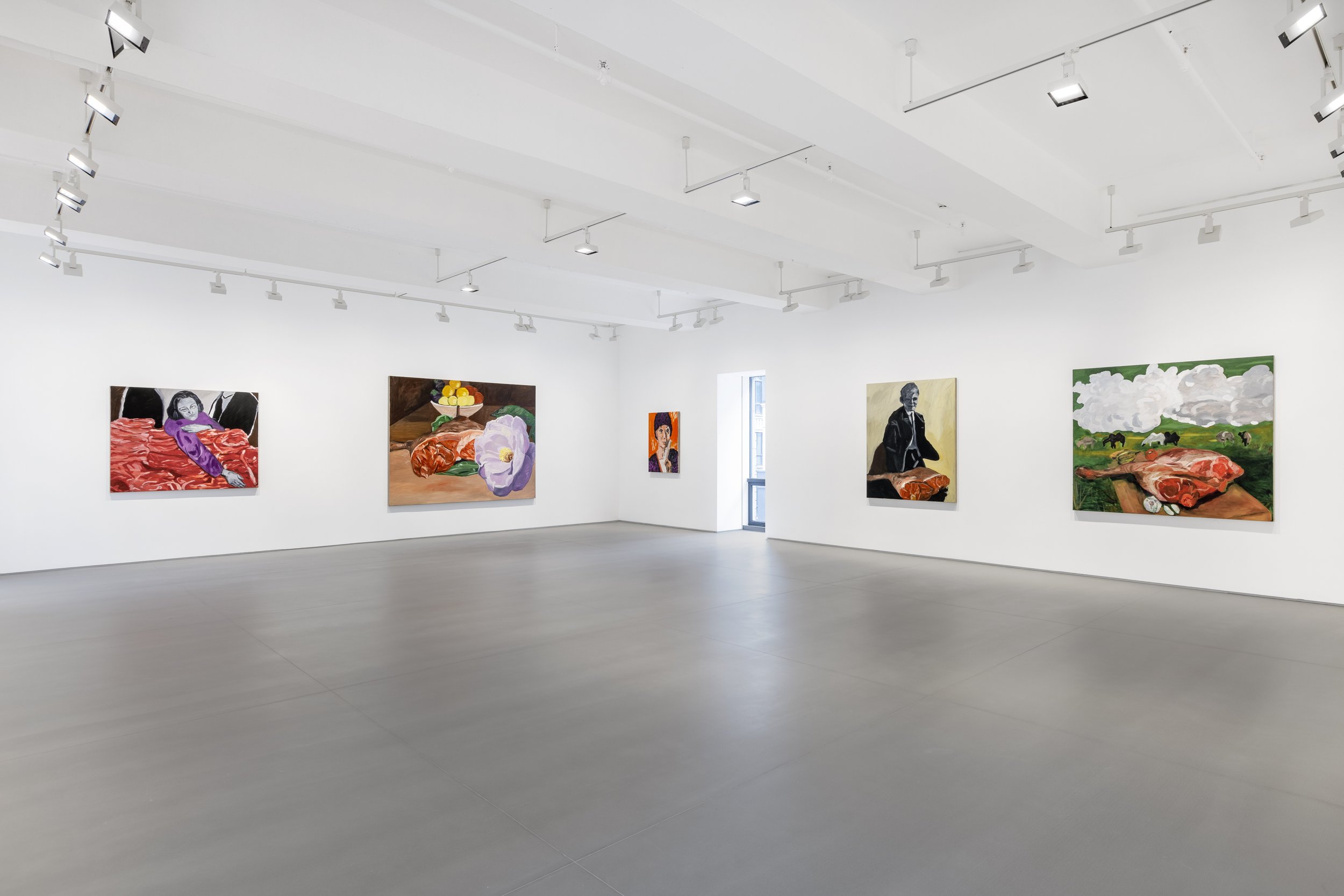
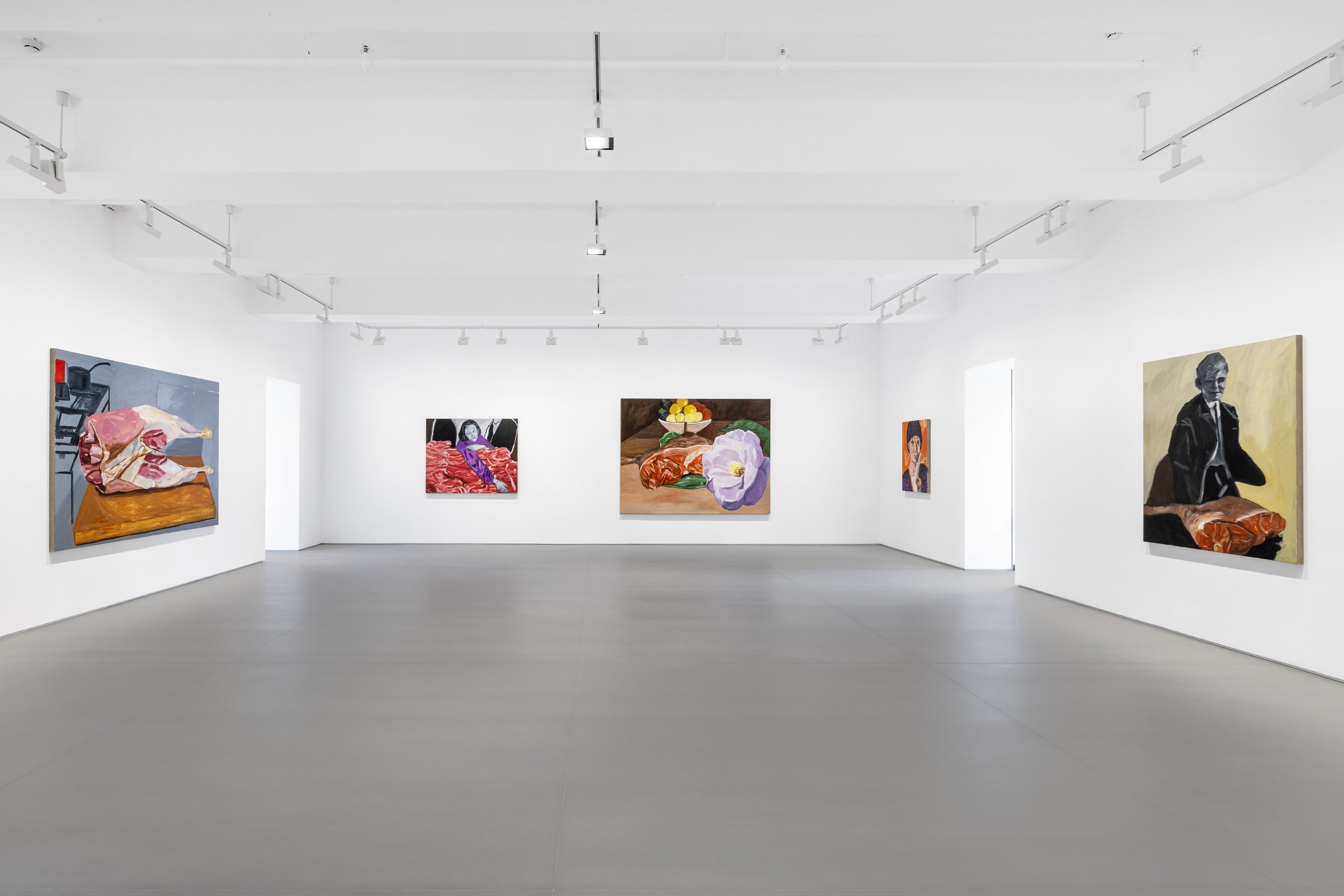

Installation view of Zhao Gang: Carnivore, Lisson Gallery, Beijing, 18 May – Autumn 2024 © Zhao Gang. Courtesy Lisson Gallery. Photography by Yang Hao 赵刚个展「肉食者」现场图,里森画廊,北京,2024年5月18日至2024年秋季 © 赵刚。图片由里森画廊提供,由杨灏拍摄
This series also portrays large animal carcasses exposed in the outdoors. The depicted grasslands and mutton are symbols of a nomadic lifestyle, echoing Zhao’s past experiences living in places scattered across the globe, intertwined with his pursuit of inner peace by traversing the prairies on motorcycle. Zhao Gang once said, "I believe the most important thing in life is, regardless of your status, you always have the ability to let go, and pick up where you left off at any given moment." With his intellectual preoccupation seeping through the canvas, Zhao reflects on what his diasporic identity means in the present, while elucidating the significance of those seemingly mundane yet deeply treasured aspects of his daily life.
About the artist
Zhao Gang delves into the fluidity of individual identities, the clash of cultures, and the intricate interplay of fragmented historical events. His works are deeply rooted in a rich and nuanced cultural heritage, drawing inspiration from both classical and contemporary, Western and Chinese influences. Within his work, patterns and concepts gracefully unfurl, expertly deconstructing visual narratives. At the age of 18, Zhao Gang became the youngest member to join the avant-garde artist group known as the ‘Star Group’, heralding the onset of the
modern art movement in China. Driven by a pursuit of artistic and political freedom, they laid the foundational stones of contemporary Chinese art. Zhao Gang’s artistic style is characterized by audacious and almost exaggerated narrative techniques and brushwork. These elements serve not only as a perpetual reaffirmation of his own existence but also as a defiant stance against the prevailing trend of artistic refinement. His works celebrate the unfettered freedom and authenticity inherent in painting. His experience of studying abroad and living overseas since 1983 has given his works a diverse style with distinctive international characteristics. Upon returning to Beijing in around 2006, Zhao Gang redirected his focus to the intricate interplay between his unique cross-cultural experiences and the annals of Chinese history. Born in this land, yet traversing the path of a new immigrant, he grapples with the sentiment of estrangement that threads through his art.
Born in Beijing in 1961, Zhao Gang currently works and lives in New York and Beijing. He attended the Maastricht Institute of Arts (formerly Stadsacademie voor Toegepaste Kunsten) in The Netherlands (1983), and Vassar College, New York (1984-1987). He obtained a Master of Arts degree from Bard College, New York in 1999. Zhao Gang has held solo exhibitions at various institutions, including the Long Museum (Chongqing Branch), Chongqing, China (2022); Long Museum (West Bund Branch), Shanghai, China (2021); Kuandu Museum of Fine Arts, Taipei (2020); Pérez Art Museum, Miami, FL, USA (2019); Museum of Contemporary Art, Santiago, Chile (2016); Ullens Center for Contemporary Art, Beijing, China (2015); Suzhou Museum, Suzhou, China (2015); Today Art Museum, Beijing, China (2011); Hong Kong Arts Centre, Hong Kong, China (2008); and He Xiangning Art Museum, Shenzhen, China (2006), among others. His works have also been featured in numerous group exhibitions, including the Solomon R. Guggenheim Museum, New York, NY, USA (2017); Beijing Minsheng Art Museum, Beijing, China (2015); OCAT Contemporary Art Terminal (Xi'an Branch), Xi'an, China (2014); Guangzhou Triennial, China (2008); Performa Biennial, New York, NY, USA (2007); and Yokohama Triennale, Japan (2005).
About Lisson Gallery
Lisson Gallery is one of the most influential and longest-running international contemporary art galleries in the world. Today the gallery supports and promotes the work of more than 60 international artists across spaces in London, New York, Los Angeles, Shanghai and Beijing. Established in 1967 by Nicholas Logsdail, Lisson Gallery pioneered the early careers of important Minimal and Conceptual artists, such as Art & Language, Carl Andre, Daniel Buren, Donald Judd, John Latham, Sol LeWitt, Richard Long and Robert Ryman among many others. It still works with many of these artists as well as others of that generation from Carmen Herrera to the renowned estate of Leon Polk Smith. In its second decade the gallery introduced significant British sculptors to the public for the first time, including Tony Cragg, Richard Deacon, Anish Kapoor, Shirazeh Houshiary and Julian Opie. Since 2000, the gallery has gone on to represent many more leading international artists such as Marina Abramović, Ai Weiwei, John Akomfrah, Susan Hiller, Tatsuo Miyajima and Sean Scully. It is also responsible for raising the international profile of a younger generation of artists led by Cory Arcangel, Ryan Gander, Van Hanos, Hugh Hayden, Haroon Mirza, Laure Prouvost, Pedro Reyes and Wael Shawky.
The exhibition opened on May 18 and will end in Autumn 2024, the opening was held from 3-6pm on May 18 2024, Lisson Gallery is located at 4/F, Building D7, Yard No.3, Jinhang East Road, Beijing.
For more information about this exhibition and others, please visit the Lisson Gallery here. The gallery can also be found on Facebook, YouTube, and Instagram.
